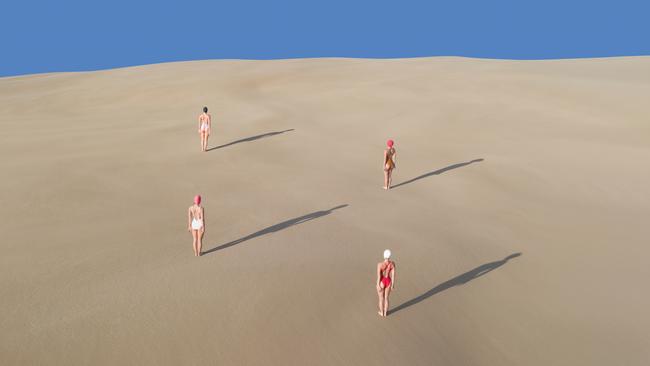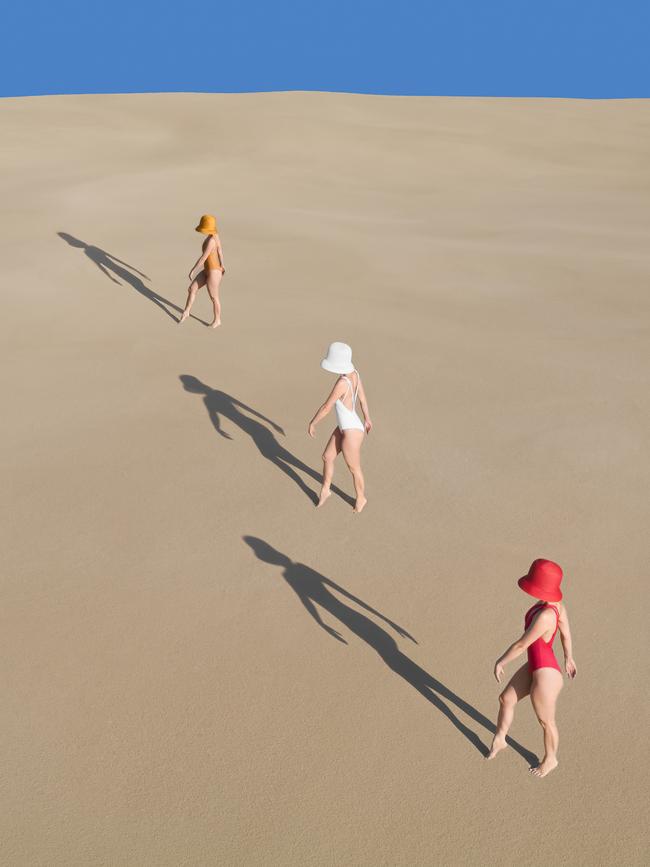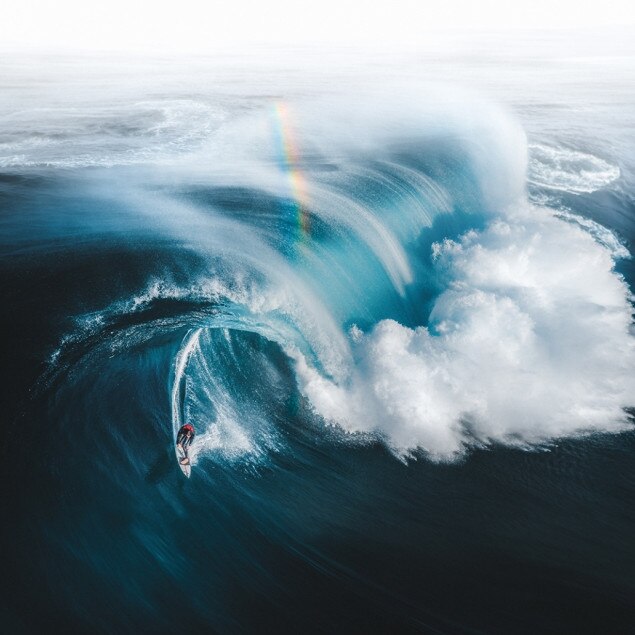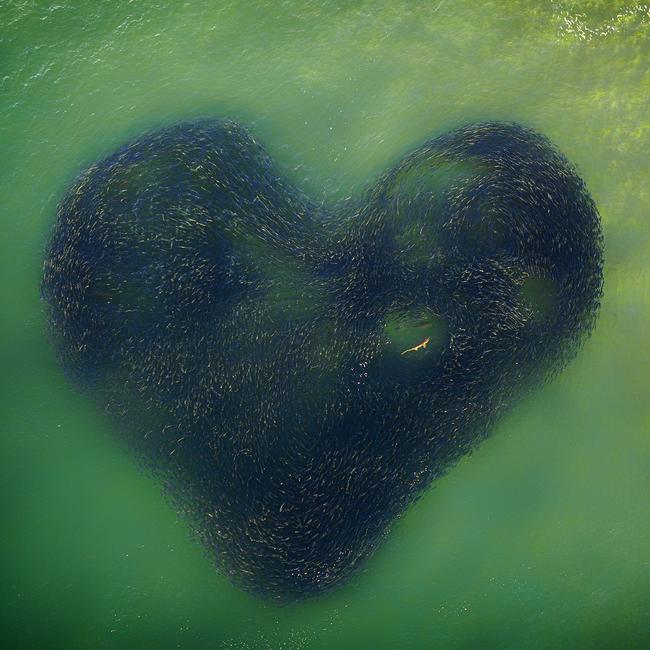Drones open up a new angle on aerial photography
Cheaper and better drones are helping amateurs turn aerial photography into fine art.

From the icy Almaty region in Kazakhstan to the remote Lofoten Islands in Norway, a new wave of aerial photography has changed the way we view life with a fresh perspective on shooting the landscapes that have long dominated classical photography and fine art.
Images from the annual Drone Photo Awards, which attracted 13,000 entries from 104 countries last year, went viral during 2021 as a means of virtual escape during extended periods of isolation.
Maria Panniati, a member of the organising committee of the Siena International Photo Awards, which organises the Drone Awards, says enthusiasm for the method — and its results — is driven by “the opportunity to see the world from a different perspective and catch images from places that we couldn’t document before the drones”.
Brad Walls, a 29-year-old from Sydney who designs apps for a living, has carved himself out a successful sideline as a fine-art aerial photographer, a mode of photography more and more are tapping into. Prior to picking up his first drone four years ago, Walls had never even touched a handheld camera.
Now, his work — including Detached, in Harmony, which comprises striking, almost abstract sand dune images — captures scenes of the Australian summer that have garnered attention here and overseas.
“I never practised or learnt about it, but I went on a holiday and picked up a drone and started flying around and taking pictures,” he says. “I don’t have any kind of arts degree, so it all comes from practice.”


Without any formal training he placed second in the 2021 Fine Art Photography Awards “Conceptual” category, and silver in both the prestigious PX3 awards and Moscow Fine Art Awards of 2021, prizes usually awarded to artists using handheld cameras. His collection of shoots, including Pools from Above, Water Geomaids and the most recent series, Detached, in Harmony, have even been compared to the work of Slim Aarons and David Hockney.
Asked about the comparison, Walls says: “It’s obviously a huge compliment, but I try not to think about that stuff too much.” Rather, he cites as his inspiration a more obscure early 20th Century fashioin photograper, Clifford Coffin.
Walls has a following of more than 30,000 on his Instagram page, where fans adore his signature compositions of geometric patterns, repetition and symmetry.
“My interest (in aerial photography) stems from the crossover of technology and art,” Walls explains. “Drones offer a new modality of expression, or rather, a more accessible modality from the air. I believed their offering was under-utilised in a photographic artistic sense. They had more to offer than landscape images.”
Advances in technology, he adds, have made the art form more accessible. “Ten years ago, drones were quadruple the investment. Additionally, the camera technology wasn’t there either,” he says. “Societal sentiment around drones seems to be more positive than it was. That may also be an influence.”
Walls uses a DJI Mavic 3 – “the top foldable drone with a great sensor for its form factor. Anything more powerful and I would be lugging around a suitcase, which is not ideal for my type of work”.
Walls says tight flying regulations have hindered creative licence when it comes to conducting shoots.
“The regulations do make it difficult to execute artistic shoots. Over time, I would like to see the regulations relaxed, allowing for more creative freedom to artists,” he says.
A photograph taken by Coffin, whose pictures were featured in British Vogue during the 1940s, has long been on his Pinterest board, Walls reveals.
“I had heard of the photographer before and knew that he was known for being a very eccentric character. Now they call him one of the great lost photographers of the Vogue photography era, and so many get captivated by his story because he did push a lot of boundaries.
“The imagery for (Coffin’s) day was very forward and I grabbed on to that because I’m always pushing uphill using drones in a way that’s a little different, and Coffin was one of the characters that pushed fashion photography sideways.”
Fascinated with how the models were arranged in Coffin’s photograph, Models Sitting on Sand Dunes, Walls wanted to use similar techniques to capture the state of the world during the pandemic. Like many, the artist had experienced how distant and repetitive life had become, and placed a keen focus on this element in his work.
“I saw how his models were spread out in the vast space and knew something was there to work with and make that into a series. Working with a drone, you have a lot of space that you can use a lot of angles,” he says.
Shot on the sand dunes near Newcastle in NSW, his drone hovering above the model captured the uniformity and surrealism of the series. “The figures are purposefully static, to symbolise how we have been frozen in time over the past 18 months.”
It took Walls nine months to finalise the images to use in his latest collection.
“Looking from a different perspective down on life is very interesting to me. And so this was a difficult thing to just use one subject,” he says. “I generally like to use people because it’s very relatable for people to look at.”
Increasingly, Australians are performing admirably on the world stage when it comes to embracing drone photography.

Perth-based photographer, Phil De Glanville won the Drone Award Sports category last year for his aerial photo, Gold at the End of the Rainbow, showing WA surfer Ollie Henry surging ahead of the barrel of a giant wave in the southwest of the country. The previous year, it was Australian drone photographer Jim Picôt wo took out the top award for his breathtaking shot, Love Heart of Nature, which captured a school of salmon forming the shape of a heart with a shark swimming inside it. Earlier in 2021, a drone shot by Steve Irwin’s son, Robert, won the People’s Choice Award in the renowned annual Wildlife Photographer of the Year competition. The image, Bushfire, depicted a fire tearing along a line in far north Queensland. Irwin launched his drone after spotting smoke near the Steve Irwin Wildlife Reserve in Cape York. Picôt tells The Australian taking out the top spot in the prestigious Drone Award competition was “mind boggling” due to the sheer size of entries, adding that drone photography is coming to be recognised as a form of fine art.

“You can call it that (fine art) because it’s interpreted by the photographer in the sense that it’s still a camera … you’re still capturing shots, and it’s what you do with the shots in post-production, in editing,” he explains.
Since buying his first drone while on holiday in Hawaii with his family six years ago, Picôt has owned several, including the DJI Mavic Pro 3, which he is still yet to unbox.
“Until the Mavic Pro 3 came out, the Mavic 2 was the go-to drone consumer drone,” he says. “With the drone you can get so many different compositions in one flight. They’re just incredible.”
However, Picôt also has a fondness for older drones, especially the Phantom 4 Pro, which those new to the hobby may overlook.
“It’s big and bulky but it’s amazingly agile and as long as you can keep pressing the mechanical shutter … you can get the shot in a split-second.”
Panniati, a member of the organising committee of the Siena International Photo Awards, says the growth drone category has been spurred by cheaper and more widely available drones
“Thanks to the technology in the drone industry now we are able to drive the drone without seeing it, opening to the opportunity to shoot marvellous footage and images that we couldn’t have imagined before,” she says.
Brad Walls will exhibit Detatched, in Harmony this year. For details visit bradscanvas.com.
-
Getting started
Experts say the DJI Mavic 2 Pro is the go-to for enthusiasts at any level, available for around $2500 from camera stores and sites. It features a professional-grade Hasselblad camera. To check the regulations for flying drones in Australia, visit CASA.


To join the conversation, please log in. Don't have an account? Register
Join the conversation, you are commenting as Logout